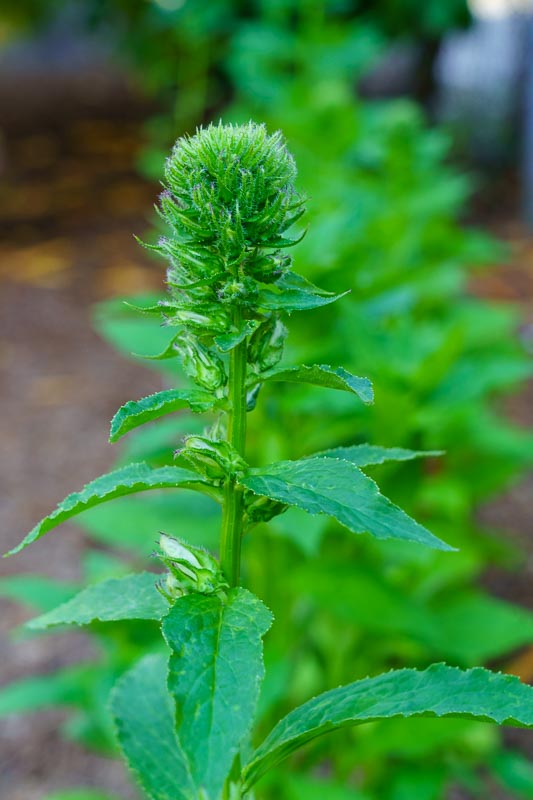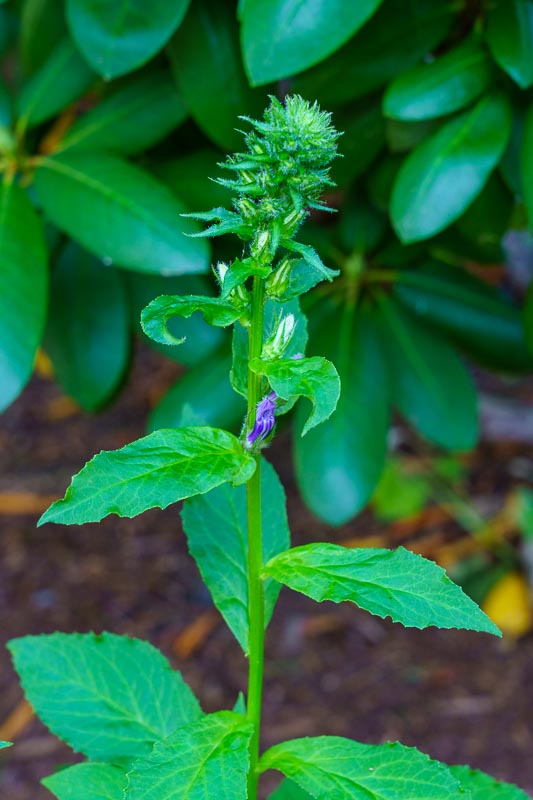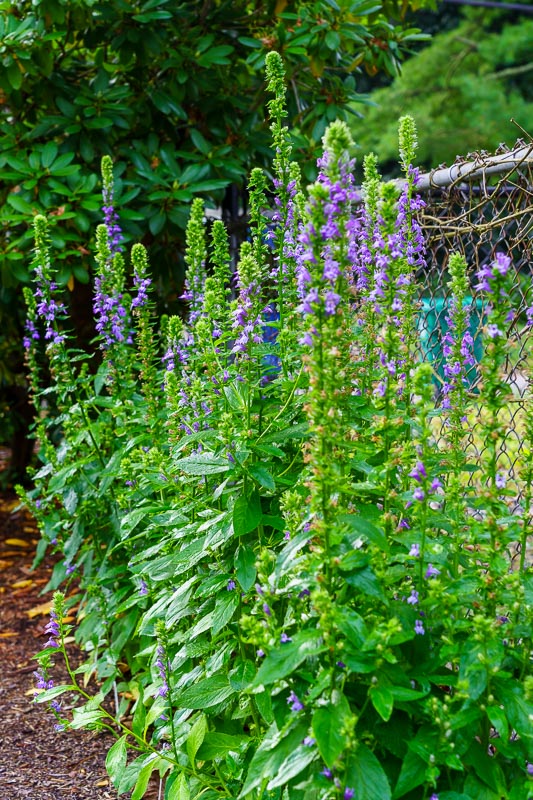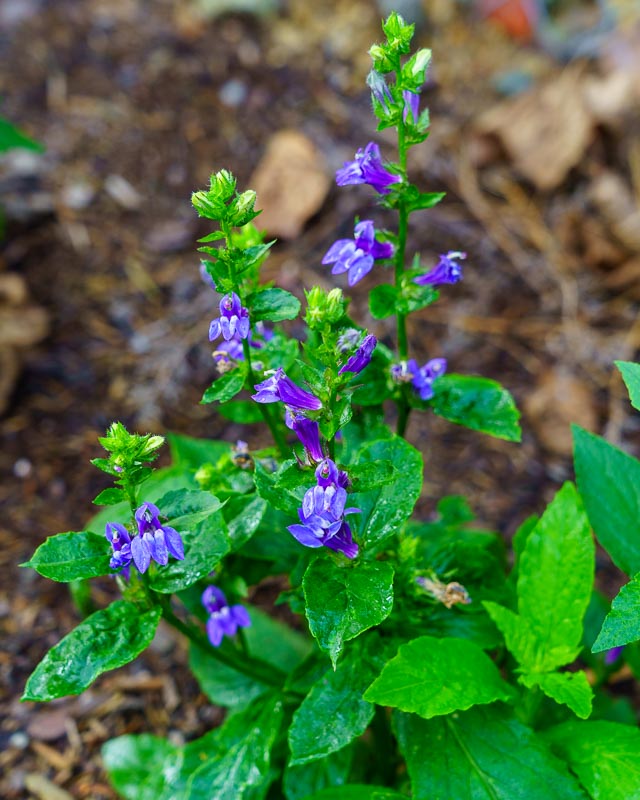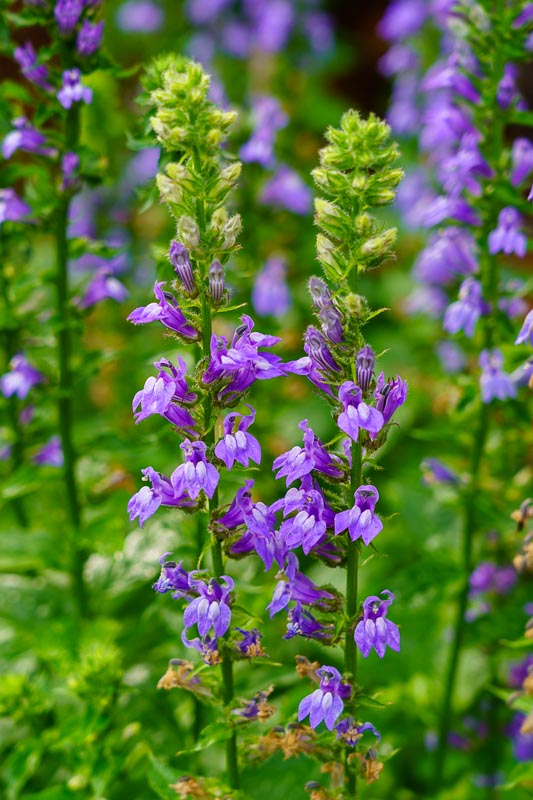Great Blue Lobelia
| Attribute | Value |
|---|---|
| Common Name | Great Blue Lobelia (aka Blue Cardinal Flower) |
| Botanical Name | Lobelia siphilitica Great Blue |
| Mature Size | 24” - 36” tall; 10” - 18” wide |
| Sun Exposure | Full Sun, Sun / Shade, Full Shade |
| Soil Type | Loamy Soil, Clay Soil, Moist/Wet Soil |
| Soil pH | Acidic, neutral |
| Bloom Time | Mid to late summer |
| Flower Color | Blue |
| Care | Blue Cardinal Flower is actually quite different in growth from its wildflower counterpart. It is a tougher, heftier plant with somewhat coarse, larger leaves, and the flowers appear in the leaf axils, unlike its elegant cousins red flowers that are in leaf-free flower spikes, held high above the plant. But the blue flowers are lovely and plentiful. Best of all, this plant is not as picky as to growing conditions. It is perfectly happy in any perennial garden with half sun to part shade. And it is simple to propagate. Let some of the flower heads go to seed in the fall, and you'll have a dozen new plants coming up next spring. |
| Soil | Average, Moist / Wet, Well Draining |
| Water | Keep the soil evenly moist, but not soggy. In areas with regular rainfall, you might not need to provide extra water. In drier areas, however, be prepared to water your lobelia every few days through the summer, and more often if the weather is exceptionally hot. |
| Temperature and Humidity | Annual lobelia does best in moderate temperatures and with moderate humidity. However, it can thrive even outside those conditions as long as you provide a little extra care. In hot climates, planting lobelia where it will be protected from peak afternoon sun can help prevent scorch or plant death. Regular watering will help maintain enough humidity for the plant to do well, but in very dry conditions, the leaves might shrivel. If you take quick action with the hose or watering can, often the plant will revive. Annual lobelia will not survive freezing temperatures, and is generally discarded in the winter. |
| Fertilizer | Since lobelia is a prolific bloomer and heavy feeder, you'll get the best results by fertilizing it every two weeks with a liquid fertilizer formulated for flowering plants. These typically are somewhat higher in phosphorus than in nitrogen and potassium, as phosphorus promotes more flowers. Mix the fertilizer with water in a watering can according to package directions, and apply to the base of the plant, avoiding its leaves. Continue to fertilize your lobelia regularly through the summer to keep it flowering. |
| Pruning | Let some of the flower heads go to seed in the fall, and you'll have a dozen new plants coming up next spring. |
| Source | https://www.americanmeadows.com/perennials/cardinal-flower/cardinal-flower-blue |
